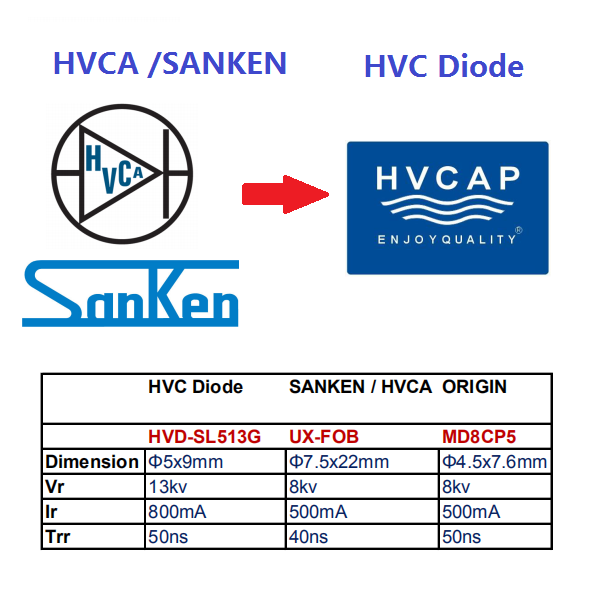What Is A High Voltage Diode?

A high voltage diode is a diode designed to work or behave in specific ways when excessive voltages are applied.
Almost any diode can work at any voltage if that is what it is supposed to do. Usually, a diode can withstand extremely high power levels by reinforcing specific parts of the diode and using particular materials in its construction. That said, several types of diodes are commonly used to deal with high voltages or voltage spikes.
A diode is a complex electrical component made of several different materials. When used in a common electrical appliance, a diode has a positive anode terminal that receives energy and a negative cathode which lets it out. In almost all diodes, this is a one-way operation: the power cannot go back. Between these two terminals is a semiconductor material that allows energy to pass through it.
It is this semiconductor that transforms a common diode into a high voltage diode. These semiconductors are created in a process called doping. A dopant is applied to each end of the semiconductor: one dopant creates a positive charge, and another is negative. The area between the two ends is not doped and is generally called the intrinsic layer or the pn junction. The doping materials and the size of the PN junction are important to the overall function of the diode.
Avalanche diodes can handle very high voltages and have a wide conductivity range. An avalanche effect is caused when a load increases in a diode without a subsequent increase in external administration. This effect will destroy normal diodes, but an avalanche diode will continue to operate until the external voltage catches up or the system equals.
Diodes that suppress transient voltage overloads are called transient voltage suppression diodes. This diode has a very large pn junction, which discourages the transmission of power through the system. When large power surges reach the system, this high voltage diode absorbs the extra power and shifts the rise to the ground. This is often the only function of one of these diodes: when it does not conduct the excess energy to land, it does not transmit any current.
The last common high voltage diode operates differently from almost every other diode. The Zener diode can transmit energy backwards through its system. When the power reaches a certain level, the specially doped PN junction of the diode begins to allow fuel to flow back through the system, creating a temporary bottleneck. This keeps the energy from moving long enough for the voltage to stabilize without harming the device. Then the pn junction returns to function as a normal diode.
Electrical appliances are an integral part of family life. Each apartment and the private house has several amenities that perform a wide variety of functions. Some are designed for cooling, while others are intended for heating and constantly maintaining high temperatures. About the last type of devices and it will be fine.
The microwave oven is a staple in our daily lives and has become a reliable kitchen appliance. They are simple in design and can include a variety of options. But, despite its reliability, the product of each manufacturer can begin to malfunction. Errors appear, and eventually, the microwave stops working. One of the most common problems is considered a malfunction of a high voltage diode. Therefore, it must first be checked.
Important detail
The high-quality repair of the product and its diagnosis can only be carried out if the composition of the diode is understood.
Typical high voltage products are composed of many simple rectifier diodes. All of them are mostly identical and together form a dwelling. The assembly of each of these products does not involve using a variety of resistors and capacitors, which are designed to equalize the voltage. The current-voltage characteristic of the diode is non-linear. The resistance of the product depends on the voltage applied during operation.
https://www.hv-caps.com/High_Voltage_Diode/2019/1212/3343.html